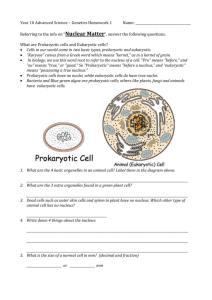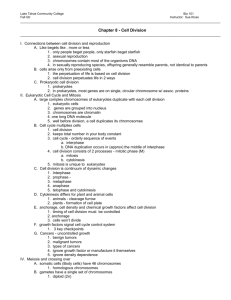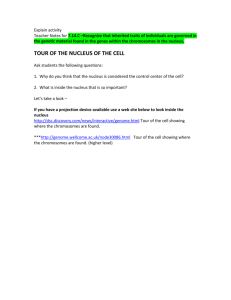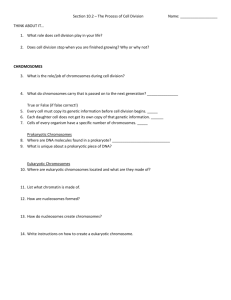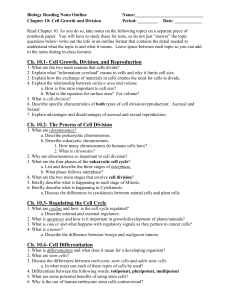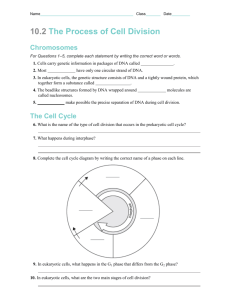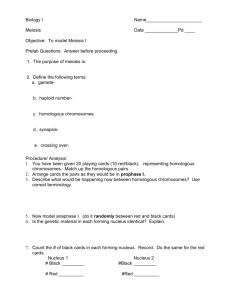Eukaryotic Cells
advertisement
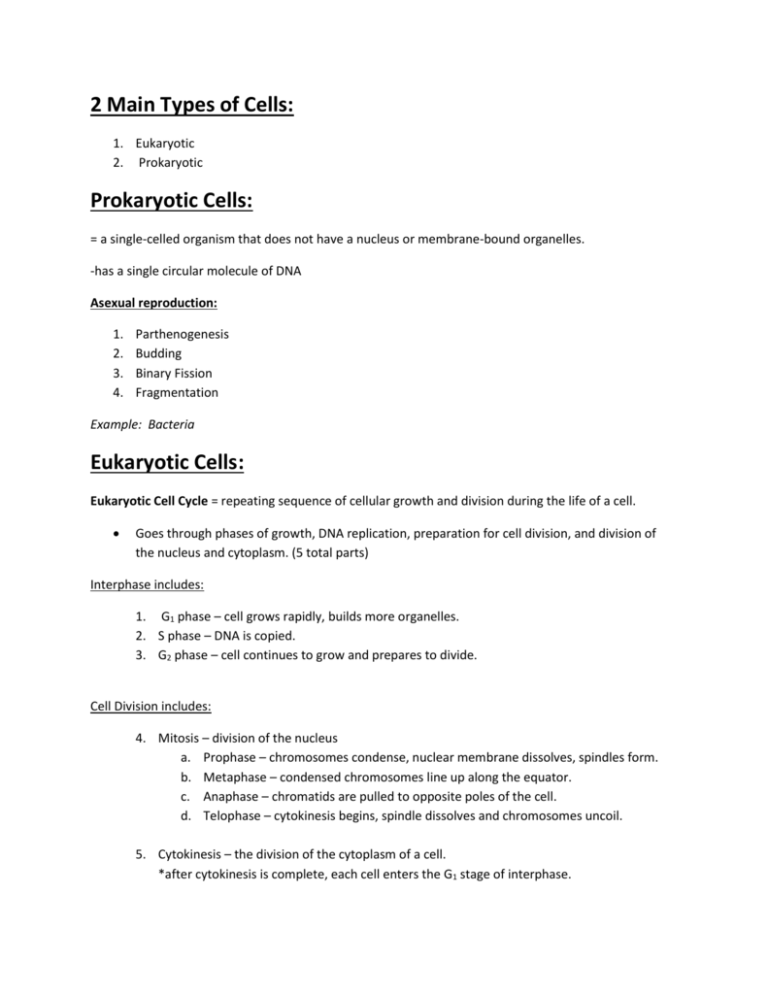
2 Main Types of Cells: 1. Eukaryotic 2. Prokaryotic Prokaryotic Cells: = a single-celled organism that does not have a nucleus or membrane-bound organelles. -has a single circular molecule of DNA Asexual reproduction: 1. 2. 3. 4. Parthenogenesis Budding Binary Fission Fragmentation Example: Bacteria Eukaryotic Cells: Eukaryotic Cell Cycle = repeating sequence of cellular growth and division during the life of a cell. Goes through phases of growth, DNA replication, preparation for cell division, and division of the nucleus and cytoplasm. (5 total parts) Interphase includes: 1. G1 phase – cell grows rapidly, builds more organelles. 2. S phase – DNA is copied. 3. G2 phase – cell continues to grow and prepares to divide. Cell Division includes: 4. Mitosis – division of the nucleus a. Prophase – chromosomes condense, nuclear membrane dissolves, spindles form. b. Metaphase – condensed chromosomes line up along the equator. c. Anaphase – chromatids are pulled to opposite poles of the cell. d. Telophase – cytokinesis begins, spindle dissolves and chromosomes uncoil. 5. Cytokinesis – the division of the cytoplasm of a cell. *after cytokinesis is complete, each cell enters the G1 stage of interphase. Sexual Reproduction – when two parents give genetic material to produce offspring that are genetically different from their parents. Haploid – describes a cell, nucleus, or organism that has only one set of unpaired chromosomes. Diploid – a cell that contains two haploid sets of chromosomes. Gametes – haploid reproductive cells that unite to form a zygote. 1. Sperm 2. Egg Meiosis – a process in cell division during which the number of chromosomes decreases to ½ the original number by two divisions of the nucleus, which results in the production of sex cells(gametes). In the space provided below, draw and describe the stages of Meiosis. (Use pg. 250-251 in your book as a guide.)


